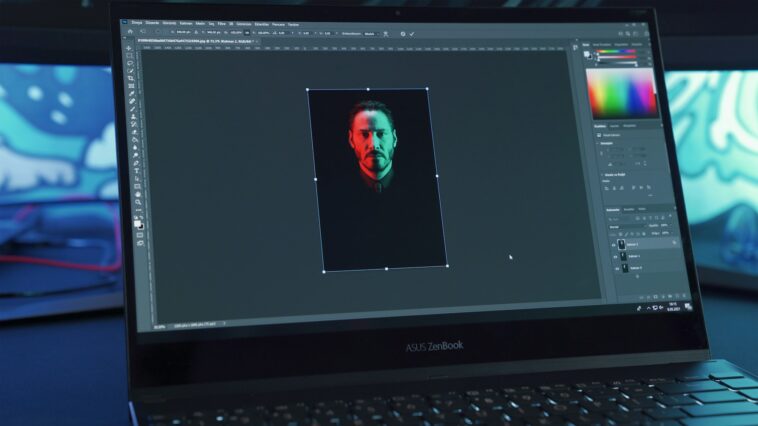Key Takeaways from the Evolution of Adobe Photoshop
- Origins and Early Development: Adobe Photoshop, initially called Display, was developed in 1987 by Thomas and John Knoll. The brothers enhanced it into a full-fledged image editing program, leading to its acquisition by Adobe Systems in 1988.
- Rise to Industry Standard: Over the years, Photoshop has become the go-to tool for raster graphics editing and digital art, evolving from a simple image editor to a complex suite with capabilities for 3D modeling, motion graphics, and advanced image manipulation.
- Version Evolution and Features: Starting from Photoshop 1.0 in 1990, each version brought innovative features like layers, advanced color editing, 3D effects, and more, with the software transitioning from a purchase model to a subscription-based service under Adobe’s Creative Cloud.
- Photoshop File Format (.PSD): The .PSD format is central to Photoshop’s functionality, supporting layers, masks, and other complex editing capabilities, contrasting with more streamlined formats like JPEG or GIF.
- Cultural Impact: Photoshop’s influence extends beyond software, becoming a verb in popular culture, synonymous with image manipulation. Its impact is seen across various industries, from graphic design to film and photography.
- Expansion of the Photoshop Family: Adobe has diversified its offerings with applications like Photoshop Elements, Lightroom, and Photoshop Express, catering to different user needs from amateur photography to professional design.
The Story of Adobe Photoshop: Transforming Digital Imagery
Imagine a world where capturing a moment was just the beginning of its journey. A world where a simple photograph could transform into a work of art, a piece of graphic genius, or a surreal masterpiece. This is the world Adobe Photoshop has created for us, a world where imagination meets technology, and the possibilities are as limitless as our creativity.
A Trip Down Memory Lane
Let’s rewind to the late 1980s. I remember sitting in front of a Macintosh, marveling at this new program called Photoshop. It was created by two brothers, Thomas and John Knoll. The Knolls, perhaps unaware at the time, were about to revolutionize the way we interact with digital images.
Back then, Photoshop was a rudimentary program, primarily used for displaying grayscale images. But as I played around with it, I could sense the potential. It wasn’t just a tool; it was a canvas waiting for artists to paint their digital masterpieces.
The Evolution of a Giant
Fast forward a few years, and Photoshop became a household name. It was no longer just a tool for professionals; it became an integral part of the digital world. Each version brought something new to the table. I remember the excitement of trying out layers for the first time in Photoshop 3.0 – it was like discovering a new dimension in image editing.
Then came the era of Creative Suite and the switch to the Creative Cloud model. Photoshop wasn’t just a standalone product anymore; it became part of a larger ecosystem, expanding its capabilities beyond what we thought was possible.
More Than Just Software
But Photoshop is more than just software. It’s a cultural phenomenon. “To photoshop” became a verb, a testament to its impact on our society. From glossy magazine covers to memes that tickle our funny bones, Photoshop touches almost every aspect of our visual culture.
A Family of Creatives
And let’s not forget the Photoshop family – a suite of applications that caters to every creative need. Lightroom for the photographers, Illustrator for the vector artists, and newer additions like Fresco, bringing the joy of painting to our tablets.
The Future Looks Bright
As we step into the future, Photoshop continues to innovate. With AI and machine learning, features like Content-Aware Fill and advanced layer techniques are just the tip of the iceberg. The sky’s the limit, and Photoshop is building the rocket ship.
In Conclusion
In our journey through the pixels and layers of Adobe Photoshop, we’ve seen how a simple program evolved into a powerhouse of digital creativity. From its humble beginnings to becoming the backbone of the creative industry, Photoshop’s story is one of innovation, cultural impact, and endless possibilities. It’s not just software; it’s a part of our digital DNA.
Frequently Asked Questions
- What is Adobe Photoshop?
Adobe Photoshop is a raster graphics editor, renowned for its powerful image editing capabilities. It’s used for everything from photo retouching to creating intricate digital paintings and 3D models. - How has Photoshop changed over the years?
Photoshop has evolved from a simple image editor to a complex tool with features for raster and vector editing, 3D modeling, and more. It transitioned from a purchase model to a subscription-based service and expanded its capabilities with each version. - What are some key features of Photoshop?
Key features include layers, advanced color editing, various selection tools, Content-Aware Fill, and support for a multitude of plugins and extensions. - Can Photoshop edit videos and 3D models?
Yes, Photoshop has limited capabilities for editing videos and 3D models, particularly in its more recent versions. - Is Photoshop part of the Adobe Creative Cloud?
Yes, Photoshop is a significant part of the Adobe Creative Cloud, offering integration with other Adobe applications and cloud-based storage and sharing features.





